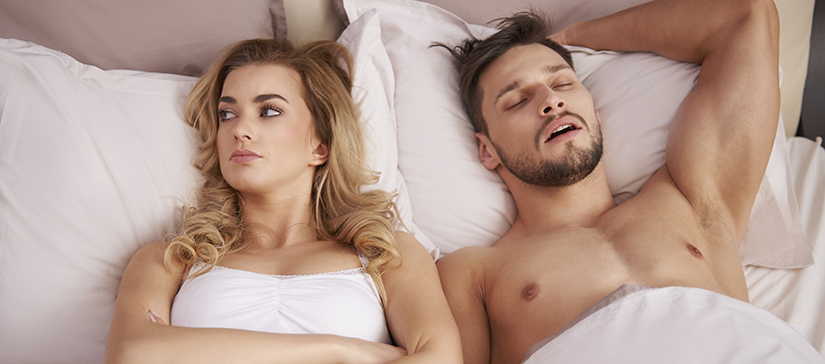
In September 1995 the American Sleep Disorder Association (ASDA) endorsed oral appliance
therapy as the third currently acceptable treatment modality for snoring and sleep
apnea. The two most common solutions include continuous positive air pressure or
the removal of either the excess palatal tissue or the uvula.
It has been estimated that 60% of men and 40% of women between the ages of 40 and
60 years of age snore. Snoring occurs when there is a partial obstruction of the
airway which causes the palatal tissues to vibrate. Obstructive sleep apnea occurs
when the airway is completely blocked for certain periods of time. As many as 20
million people in North America may have sleep apnea. Snoring is a social problem,
particularly for the spouse, but obstructive sleep apnea poses a significant health
risk for the patient in that it can lead to irregular heartbeat, high blood pressure,
heart attacks and strokes.
SLEEP APNEA
Sleep apnea is a type of breathing disorder which is a serious, potentially life-threatening
condition characterized by brief interruptions of breathing during sleep. There
are basically three types of apnea:
1. Central Apnea
The upper airway is open, but no oxygen is getting into the system. This occurs
because the patient is not getting a chemical response from the brain to stimulate
the lungs and the diaphragm to assist with breathing.
2. Obstructive Sleep Apnea
The lungs and the diaphragm are functioning normally, but no oxygen is entering
the system because there is an obstruction in the upper airway.
3. Mixed Apnea
This is a combination of central and obstructive sleep apnea.
Oral appliances are only indicated for use in patients suffering from obstructive
sleep apnea (OSA). The signs and symptoms of OSA include snoring, excessive daytime
sleepiness, gasping or choking during the night, non-refreshed sleep, fragmented
sleep, clouded memory, irritability, personality changes, decreased sex drive, impotence,
and morning headaches.
Factors that affect obstructive sleep apnea are as follows:
- Age
- Obesity
- Alcohol
- Sedative Hypnotics (sleeping pills)
Children can also snore and suffer from obstructive sleep apnea. Often they are
highly allergic and their airway is blocked due to enlarged adenoids, tonsils or
swollen nasal mucosa. Clinical signs would indicate a turned up nose, allergic shiners
under the eyes, mucous draining out of the nose, mouth breathing, and a nasal sound
to the voice. Other signs are bed wetting, irritability, difficulty in concentrating
at school and hyperactivity
At the present time, obstructive sleep apnea is defined as a medical problem and
the diagnosis must be made by a medical doctor or sleep physician (pulmonologist)
who is specially trained in the area of sleep medicine.
The dental profession has an important role to play in the treatment of patients
with snoring and sleep apnea. If 60% of men and 40% of women between forty and sixty
years of age snore, this is a huge problem. Snoring is a serious social problem
for the spouse, but obstructive sleep apnea can be a life threatening situation
for the patient in that it can lead to irregular heartbeat, high blood pressure
and strokes.
At the present time, obstructive sleep apnea is a medical condition that is being
controlled and treated mainly by the medical profession. Despite the fact that in
September 1995, the American Sleep Disorder Association finally endorsed oral appliance
therapy as the third currently acceptable treatment method for snoring and sleep
apnea, the vast majority of the medical doctors are not aware of the value of oral
appliances
As time goes on, the public is going to become more aware of the health risks associated
with snoring and sleep apnea. It is the dental professionals responsibility to educate
their members, the public and the medical profession about the important role that
dentists and oral appliances play in the treatment of snoring and obstructive sleep
apnea.